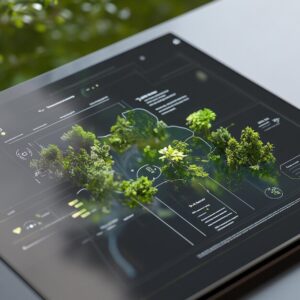
Our working methods are evolving. Job titles, lengthy hierarchies, and inflexible procedures no longer characterise modern teams. Rather, today’s success hinges on flexibility, teamwork, and speed, all of which the Task-Based Model provides.
The task-based paradigm is emerging as the future of productive teams in a world where efficiency is more important than ever. It promotes more intelligent processes, lets individuals concentrate on their strengths, and enables businesses to operate more quickly and accurately. Let’s examine how this paradigm is changing the contemporary workplace and the reasons behind its influence on productivity going forward.
What Is the Task-Based Model?
At its core, the Task Based Model is a work approach that organises projects around specific tasks rather than traditional job roles. Instead of assigning work based on positions like developer, designer, or manager, the focus shifts to what needs to be done and who is best equipped to do it.
Every assignment is divided into distinct, doable parts that are determined by talent rather than title. As a result, the system prioritises knowledge, flexibility, and teamwork over rigidity and hierarchy.
This approach fits perfectly into today’s fast-paced world, where project demands and technologies evolve rapidly. It ensures that every task is handled by the right person at the right time — making teamwork more efficient and results-driven.
Why Traditional Models Are Falling Behind
Stability, not speed, was the goal of traditional work organisations. Workers were given set roles and duties that were frequently unrelated to the evolving requirements of projects. Although this was effective in slower, more predictable settings, it is unable to compete in the flexible, technologically advanced workplaces of today.
Rigid hierarchies can create bottlenecks — approvals take too long, communication slows down, and team members get stuck doing tasks outside their strengths. The result? Burnout, inefficiency, and frustration.
The Task Based Model eliminates those barriers. It brings clarity and ownership to every project by focusing on results instead of positions. This shift doesn’t just improve productivity — it transforms how people think about work itself.
The Future of Productivity Lies in Flexibility
Modern businesses need teams that can pivot quickly, handle complex challenges, and deliver consistently high-quality results. The task-based model makes that possible by promoting flexibility at every level.
Here’s how:
-
Work becomes fluid. Tasks are distributed dynamically, allowing teams to adapt to project changes without waiting for managerial reshuffles.
-
Skills are maximised. Each member contributes based on their strengths, not their job title. This leads to higher efficiency and greater satisfaction.
-
Responsibility is shared. Team members take ownership of their tasks, fostering accountability and transparency.
-
Collaboration is seamless. Cross-functional work becomes natural because people are connected by common goals rather than rigid roles.
By designing workflows around tasks, teams can accomplish more in less time — and with better results.
How Technology Is Powering the Shift
Automation is also very important. Employees may concentrate on strategic work and innovative problem-solving by automating monotonous jobs. Managers may more effectively allocate resources with the use of AI-driven insights, guaranteeing that each activity directly advances corporate objectives.
For contemporary, tech-savvy firms, this tech-enabled workplace is a logical progression as it perfectly supports the task-based paradigm.
The Human Side of the Task-Based Model
At its heart, the task based model isn’t just about productivity — it’s about people. It gives professionals the freedom to use their strengths, learn new skills, and contribute meaningfully to shared goals.
This approach builds trust and motivation. When individuals see how their work fits into the bigger picture, they feel more connected to the team’s success. It also encourages continuous learning, as people get exposed to new tasks and areas beyond their traditional scope.
Most importantly, it creates a culture where work feels purposeful, not repetitive — a key driver of productivity and engagement in any organisation.
Why Companies Are Adopting It Fast
Because task-based systems produce quantifiable outcomes, businesses in a variety of sectors, including marketing, technology, design, and consulting, are shifting toward them.
Some of the biggest benefits include:
-
Faster project delivery: With smaller, defined tasks, teams can hit milestones quicker.
-
Higher quality work: Tasks go to people with the best skills for the job.
-
Improved accountability: Progress is transparent, reducing overlap or miscommunication.
-
Scalability: Teams can grow or adapt easily without restructuring entire departments.
It’s no surprise that task-based structures are becoming the go-to model for startups, remote teams, and even large enterprises looking to stay competitive.
Challenges and How to Overcome Them
Transitioning to a task-based model does require mindset changes. Teams must embrace new ways of working, and leaders must trust their people to take ownership.
Some common challenges include:
-
Avoiding task fragmentation — ensuring small tasks still align with the big picture.
-
Maintaining clear communication among distributed teams.
-
Training team members to use new project management tools effectively.
With the right balance of technology, transparency, and leadership, these challenges quickly turn into opportunities for growth.
Conclusion: The Future Is Task-Based
The future of productivity isn’t about doing more — it’s about working smarter. The Task Based Model empowers teams to focus on what truly matters: outcomes, collaboration, and continuous improvement.
By replacing rigid job structures with fluid, skill-based task systems, organisations can unlock higher efficiency, better morale, and a stronger sense of purpose across every project.
The task-based paradigm, which strikes a balance between technology and people, structure and flexibility, accuracy and creativity, is clearly the way of the future for organisations as they continue to change. It’s not only a novel approach to work; it’s the more intelligent method to advance.


